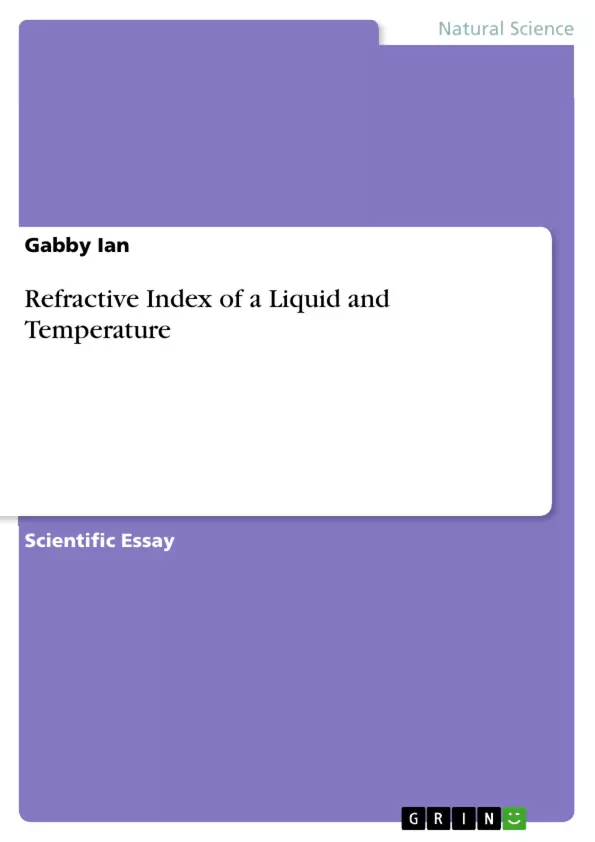After learning the refractive index concept in class, the author started wondering what will be the effect of changing temperature on the refractive index. Being a fan of swimming, concepts of apparent and real depth have always been fascinating to me. In this paper, he wanted to explore how the apparent and real depth of a liquid would change with an increase in temperature at different times of the day.
The speed of light keeps changing as light moves from one medium to another of different optical densities. For instance, the speed of a ray of light moving from a denser medium to a rarer medium will decrease. If the ray reverse in the same direction, this time moving from a rarer medium to a denser medium, its speed will increase. Ideally, when the ray moves from a denser medium to a rarer medium, its particles collect together, hence reducing speed. On the other hand, when the ray is moving from the rarer medium to a denser medium, its particles spread out, and speed increases.
Table of Contents
- Introduction
- Research Question
- Research Hypothesis
- Methodology
- Materials
- Procedure
- Safety Precautions
- Results
- Graphs
- Data Analysis
- Discussion and Conclusion
- References
Objectives and Key Themes
This investigation aims to explore the relationship between temperature and the refractive index of a liquid, specifically water. The study seeks to determine if changes in temperature influence the refractive index of the liquid.
- Refractive Index and its Relationship to Temperature
- The Influence of Temperature on Light Speed and Refraction
- Apparent and Real Depth Changes Due to Temperature Variations
- Snell's Law and its Application in Refractive Index Measurement
- Experimental Design and Control of Variables
Chapter Summaries
- Introduction: This section introduces the concept of refractive index and its dependence on the speed of light in different mediums. The author explores the phenomenon of apparent and real depth changes and explains how light speed varies with medium density. The introduction also outlines the research question and hypothesis.
- Research Question: This section explicitly states the research question, addressing whether the refractive index of a liquid varies with temperature.
- Research Hypothesis: The hypothesis proposes that increasing the temperature of a liquid will lead to a higher refractive index due to a decrease in density.
- Methodology: This chapter outlines the experimental design, including the independent variable (temperature and angle of incidence), dependent variable (refractive index), and control variables (amount of liquid and container size). It also provides a detailed description of the materials, procedure, and safety precautions.
Keywords
The research revolves around the key concepts of refractive index, temperature, light speed, density, Snell's law, apparent depth, real depth, experimental design, and variables. The investigation focuses on determining the relationship between temperature variations and the refractive index of a liquid through controlled experimentation.
- Quote paper
- Gabby Ian (Author), 2021, Refractive Index of a Liquid and Temperature, Munich, GRIN Verlag, https://www.grin.com/document/1045116



